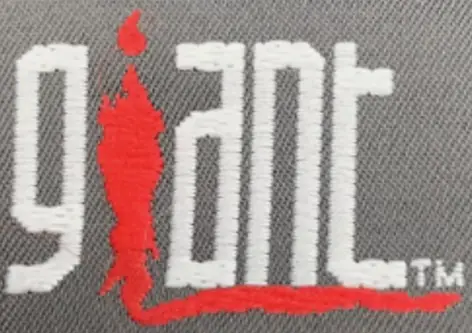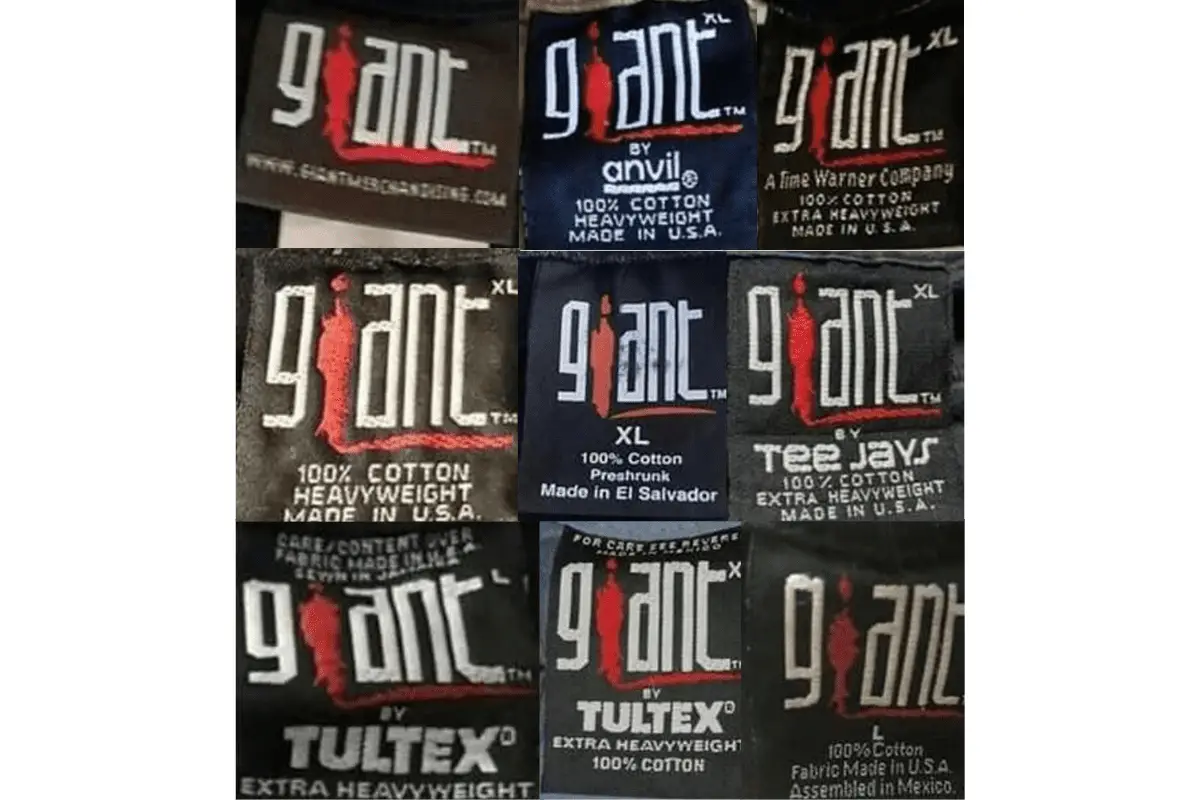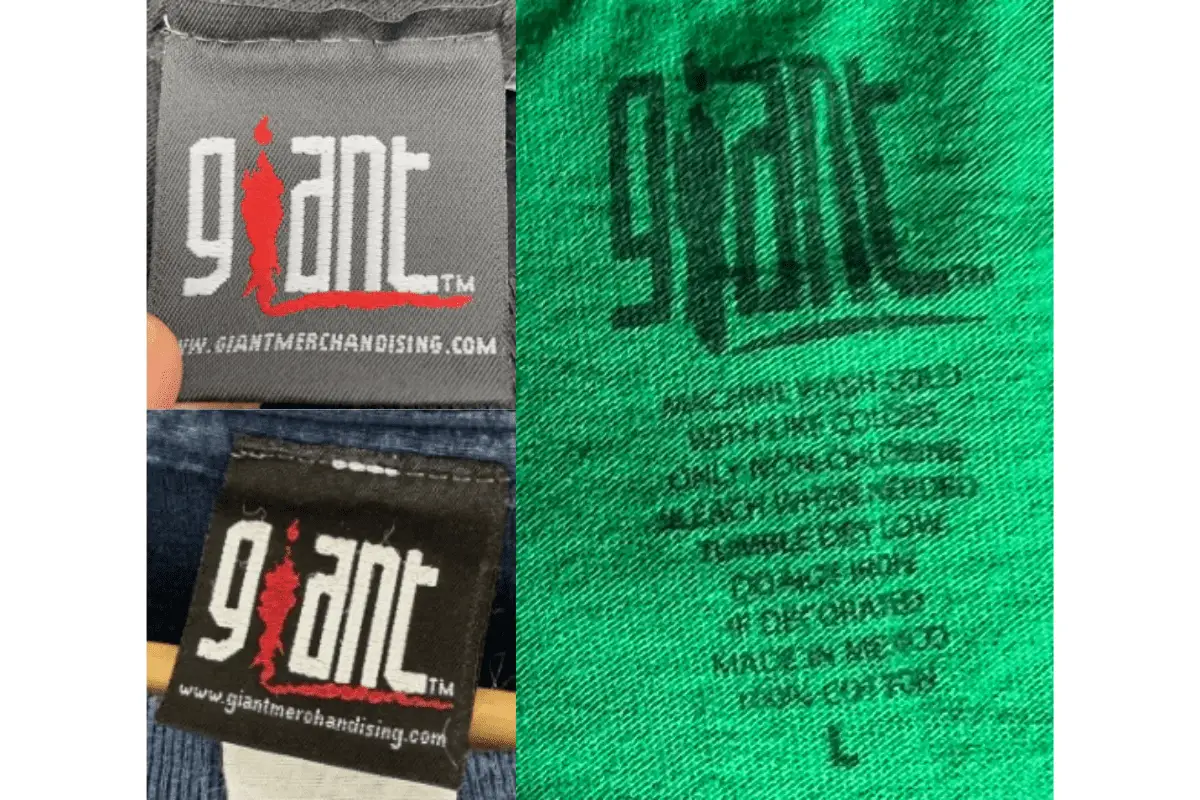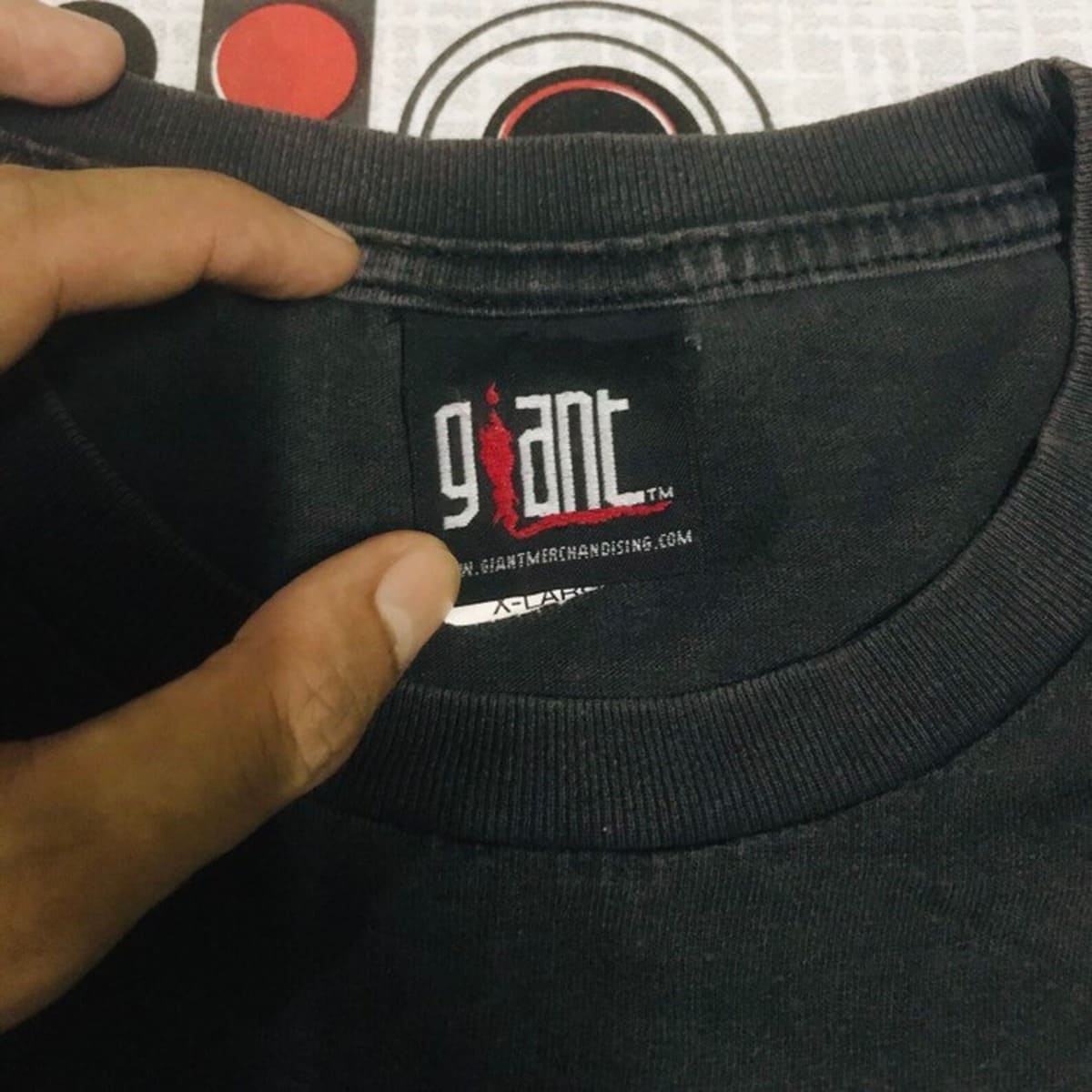Giant Merchandising holds a unique place in the world of vintage clothing, particularly in the realm of band t-shirts. Founded in 1990 as a joint venture between legendary rock manager Irving Azoff and Warner Bros., Giant quickly became synonymous with rock music apparel. While the company did produce merchandise for Warner Bros. movies and cartoons, its t-shirts became a symbol of rock fan loyalty. During this era, rock bands were seen as a goldmine for merch sales, with the rock genre being particularly lucrative. By 1989, Brockum and Winterland, two of Giant’s biggest competitors, had generated nearly $500 million in combined sales, underscoring the massive potential of the music merchandise market.
From its inception, Giant distinguished itself from other merchandising companies through strategic partnerships with manufacturers. Unlike Brockum, which quietly relied on Fruit of the Loom (FOTL) for blanks, Giant developed unique agreements with brands like Anvil and Tee Jays. These collaborations allowed Giant to display its partners’ logos alongside its own branding on tags, creating a distinct identity in the competitive merch market. This era saw iconic releases like the Nirvana ‘Heart-Shaped Box’ t-shirt, where the Giant/Tee Jays and Giant/Tultex tags became collectors’ items, marking a new wave of band merchandise in the early 1990s.
As the decade progressed, Giant shifted much of its production overseas, though it continued to manufacture certain pieces in the U.S. until the late 1990s. With the rise of the website era and the growing global appeal of bands like Rage Against the Machine and Metallica, Giant adapted by introducing non-woven tags from El Salvador and Mexico. Today, these tags, along with the brand’s evolving logos, help vintage enthusiasts date and identify authentic Giant merchandise from the 1990s and early 2000s, cementing the brand’s place in the history of music and fashion.
90s Adidas TV Commercial
How to tell if Giant is vintage from the logo
Giant is a clothing brand known for its association with music merchandise, particularly band shirts during the 1990s and early 2000s. Identifying vintage Giant clothing often begins with looking at the logo design, which evolved over the years. Here’s a guide to help you determine if your Giant piece is vintage by using its logo.
1990s to 2000s Giant logo
- The Giant logo from this era prominently features bold, blocky text with a white color scheme.
- One of the defining characteristics of the logo is the silhouette of a red, torch-holding figure, which is integrated into the logo design. The torch appears in place of the ‘i’ in “giant.”
- The logo also often includes a red underline that extends across the bottom of the text, giving it a distinctive, branded feel.
- This version of the logo was prevalent during the height of Giant’s prominence in producing licensed band merchandise in the 1990s and early 2000s.

1990s to 2000s Giant logo
How to tell if Giant is vintage from the tags
The evolution of Giant’s tags provides clear indicators of the era in which a piece was produced. From their distinct font and logos to shifts in manufacturing locations, these tags offer clues to date a garment. Over time, Giant has adapted its branding, with changes in materials, manufacturing locations, and design aesthetics. Below is a breakdown of Giant’s tags based on the attached images from different eras.
Can’t figure out your vintage tags or labels? Upload a picture on our vintage tag identification page, and we’ll assist you!
1990s vintage Giant tags
- Features the bold “giant” logo with a red silhouette of a figure as part of the branding.
- Commonly states “Heavyweight” or “Extra Heavyweight” to indicate fabric quality.
- Manufacturing details often include “Made in the U.S.A.” with some variations including El Salvador or Mexico.
- Several tags reference partnerships with other brands like “Anvil” or “Tee Jays” and fabric quality by “TULTEX.”
- Size indicators are typically prominent, often placed next to the logo, such as “XL” or “L.”

1990s Giant tags
2000s vintage Giant tags
- The “giant” logo remains largely the same with the red figure silhouette.
- There’s a more modern look, with tags incorporating websites like “giantmerchandising.com.”
- Tags continue to mention heavyweight cotton but shift towards a cleaner and simplified design with fewer additional details.
- Sizes like “L” are still clearly indicated, often integrated into the overall design layout.
- Manufacturing shifts, with tags showing “Made in Mexico” or “Assembled in Mexico,” pointing to changes in production locations.

2000s Giant tags




Hi Dear, are you in fact visiting this web page regularly, if
so after that you will definitely take fastidious knowledge.
Howdy! Do you know if they make any plugins to protect against hackers?
I’m kinda paranoid about losing everything I’ve worked hard on.
Any suggestions?